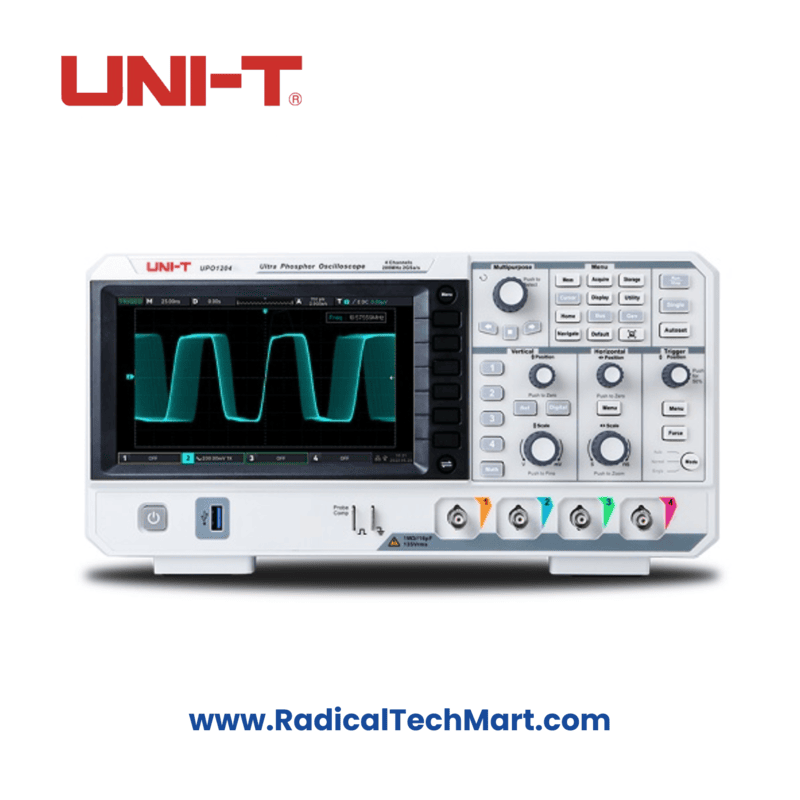
UNI-T UPO1054 Digital Oscilloscope 50MHz 4 Channel
UNI-T UPO1054 is a 50MHz 4-channel digital oscilloscope featuring 2GSa/s sampling rate and advanced Fast Acquire technology for high-precision measurements.
Product Summary:
The UNI-T UPO1054 digital oscilloscope features a 50MHz bandwidth, 2GSa/s sampling rate, and 4 channels, with UNI-T's proprietary Fast Acquire 3D Phosphor technology. Ideal for real-time debugging and protocol analysis across various electronics industries.
Key Features:
Bandwidth: 50 MHz
4 Independent Channels
Real-time Sampling Rate: 2GSa/s
Waveform Capture Rate: Up to 500,000 wfm/s (Fast Acquire)
Deep Memory Depth: 56 Mpts
Large 7" TFT-LCD Display (800x480 resolution)
Rich Trigger & Bus Decoding (RS232/UART, I2C, SPI)
USB Host, USB Device, and LAN Interfaces
Supports 36 Auto Measurements & Full Memory Real-Time Decoding
Independent DVM Module Included
Applications:
Communication and Networking Equipment Testing
Semiconductor and Integrated Circuit Debugging
Automotive Electronics Development
Field Maintenance and Troubleshooting
Consumer Electronics R&D
Instrumentation and Education Labs
Embedded System & Microcontroller Debugging
Product Benefits:
High waveform acquisition speed ensures fast response to signal variations
4-channel support enables simultaneous multi-signal monitoring
Advanced decoding and protocol analysis increases debugging efficiency
Portable yet powerful—ideal for both lab and field use
Long memory depth ensures comprehensive waveform capture
FAQs:
Q1: What is the maximum waveform capture rate of the UNI-T UPO1054?
A1: It supports up to 500,000 waveforms per second in Fast Acquire mode, making it suitable for fast signal detection.
Q2: Is the oscilloscope suitable for automotive electronics testing?
A2: Yes, it’s ideal for testing and debugging in automotive electronic systems with its high-speed sampling and multi-channel capability.
Q3: Can I perform protocol decoding on I2C and UART with this model?
A3: Absolutely. The UPO1054 supports RS232/UART, I2C, and SPI bus analysis with real-time full-memory hardware decoding.